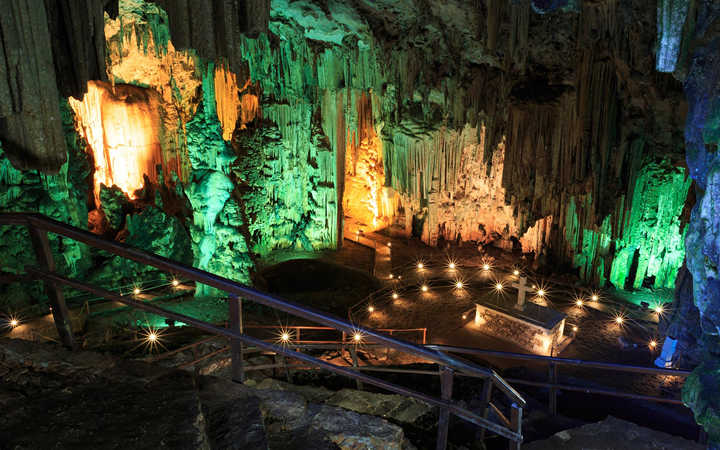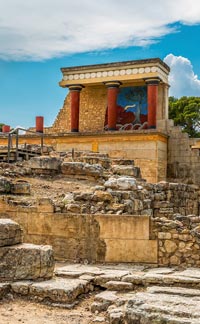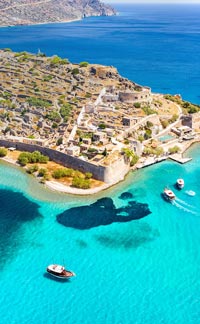Melidoni cave is sited on a ridge on the southern slopes of Mt. Kouloukonas, about 250 meters above sea level and overlooking northern Crete's central coastal plain. It's about 5 km from the Aegean Sea and 40 km west of Heraklion. It is also called Gerontospilios (Old Man's Cave). The cave, and the nearby village of Melidoni, were named after Antonios Melidonis, a native of the village who had a prominent role in the rebellion against the Ottoman Turks.
There are two reasons this cave is important: first, it has proved to be an archeologically rich source of artifacts, and, second, it played a large role in the Cretan Resistance in the middle 1820's.
The cave shows signs of use dating back to the Neolithic Period (ca 3,500 BC). A number of objects have been unearthed in the cave, some of which can be seen in the Archeological Museum in Rethymno, about 25 km to the west. These include Neolithic tools, and various items associated with the cave's use as a place of worship during the Middle Minoan period (2100-1600 BC).
In Mythology, the cave was said to be the home of Talos, history's first robot. This bronze automaton was commissioned by Zeus to be made by Hephaestus, the god of metallurgy, craftsmen, sculptors and volcanoes (The Greek word for volcano is "hephaestio".). Talos had a vein that ran from his neck to his ankle. A bronze nail in his ankle served as a plug.
His job was to range about Crete, something he did 3 times a day, and protect Europa, Zeus's lover, whom Zeus had brought to Crete after kidnapping her. He also protected Crete from pirates and invaders.
Enter Jason and his Argonauts, en route home after swiping the golden fleece from an area up near the Black Sea. Jason wanted to make landfall on Crete. Talos hurled rocks at Jason's approaching ship. Jason finally managed to land on Crete. He recruited the services of the sorceress Media, who, according to one version of the story, bewitched Talos and convinced him that he would become immortal if he removed the bronze nail.
In another version, from the Argonautica, a 3rd century BC epic poem composed by Apollonius of Rhodes, Medea hypnotizes Talos from the Argo, Jason's ship, so that he pulls out the nail, and, in the words of Apollonius, "the ichor ran out of him like molten lead. (Ichor is the golden fluid that comprised the blood of the gods.)."
A Talos-worshipping cult sprang up at the site of Melidoni Cave. There is also evidence of worship of a female deity on the site. During the Roman occupation the cave became a sanctuary of Talos Hermes (Hermes became the god Mercury in Roman mythology).
The most historically significant event at Melidoni Cave occurred in 1824, during the revolution against the Ottoman Turks. About 250 villagers, many of them women and children, took refuge in the cave. The Turks sealed up the cave's moth, started a fire, and suffocated every villager except for one survivor. The survivor, Manolis Kirmizakis, returned to the cave 10 years later with the English explorer Robert Pashley, and discovered the remains of the victims. The bones were then gathered together in a large ossuary which is in the cave today, along with a small chapel. Every year a service is held commemorating the massacre.
The cave has walkways for safety, and different colored lights illuminate the stalactites and stalagmites. At the entrance terrace there are toilets and a taverna with a splendid view of the surrounding area. The cave is quite large. A number of chambers towards the rear are closed for ongoing excavations.
There is a small entrance fee, and the cave is open from April to October.




















